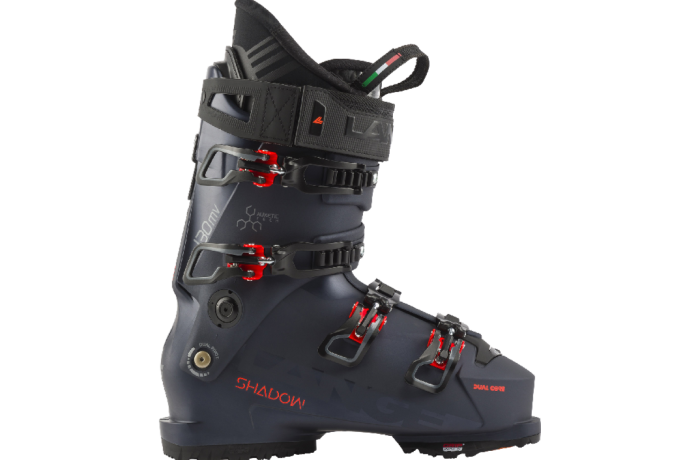After testing the Lange Shadow 130 MV again, as it enters its second season on the market, it’s tempting to start our review of it with a rundown of the highly technical, structural redesign that went into creating the Shadow boots. All that tech talk is interesting stuff, and if you happened to get sucked into a Shadow sales pitch last year while you were trying on boots you probably heard all about Dual Pivot and Suspension Blade.
But it doesn’t matter. Those tech stories only become important when the sum of all the boot's parts don’t work and the tech story is the only one a review writer has left to tell. Like any masterfully executed work, the granular details of the Shadow’s construction fade from view and you’re left with the essential, glorious experience of that thing. In this case that experience is skiing, and the thing about the Shadow MV 130 that testers love is that they are better skiers in this boot. And more comfortable. And they last longer through the day. And as a group, our testers marveled at the confluence of those three facts.
The first experience with the boot testers describe is the ease of entry and shockingly silky, draped initial fit against the foot and leg. Held but not pinched. Soft but not weak. The plastic is supple and aids the Auxetic liner in letting the foot find an easy place to live, right off the bat. Auxetic is the term Lange uses for a micro-etched external material that lets the liner bend around the small contours and bony protuberances of the foot and ankle without needing to render the liner construction too soft. It won’t last a month, let alone a season, is a concern testers express upon initial try-on. And yet, long-term tests started over a year ago contradict that. The Shadow boots do not pack out as quickly as others of the same category and performance tier and yet they do retain their soft first fit, day after day.
Testers, across the board, do not mention any stance issues or need to make changes to the stock set up of the Shadow MV 130. They do not mention any fit issues of concern. They do comment that the flex feel is ideal in its distribution of pressure along the shin with a blend of cushion and firmness that supports aggressive flexing movements without any bite at the boot top or hard feel of the shell lurking behind the tongue. They like the range of flex travel—shorter than expected given how initially soft the boot felt indoors. As the boot cooled down on subsequent test runs testers noted that the flex feel firmed up but never trended into abrupt territory.
The Dual Pivot cuff-to-shell connection points—two per side--help enable this short-throw, smooth-flex feel. The flex at the primary axis of cuff rotation (the upper points) is restrained not only by the boot spine but by the lower connection points. The lower connections are buffered by an elastomer (aka, rubbery) insert, so a slight amount of movement is allowed there but in a controlled fashion. These lower elastomers can get changed out for softer inserts that come in the box but testers who have tried it went back to the stock setting for a more direct flex feel.
The boot’s rear spine enhances the smooth delivery of power to, and pressure-control over, the ski and many testers mentioned it. The cuff and lower shell slide together along the tongue-in-groove (we like saying that) Suspension Blade that binds the two parts in a gliding interface that’s pinned together at the top of its length with, again, an elastomer insert that allows for a dampened, slightly flexible connection. This unique marriage of cuff and lower reduces abruptness of flex and smooths the way energy is transmitted to the shovel of the ski. Testers say this forward engagement is not deadened or muted, but rather more feathered-on. The result is a no-surprises turn entry and dependable shovel-hook-up, even when mistakes are made or snow is inconsistent. Testers who didn’t believe the hype prior to testing changed their tune after two or three runs on snow.
Our best, veteran testers can feel all these nuances and can relate them back to how the Lange predecessor RX line compared. There is no comparison, they say, other than perhaps that the RX was one of their favorite all-mountain boots during its reign, but now there’s a new throne sitter.
Less experienced testers (we have some new blood this year) may not connect the dots between new design elements and enhanced performance, but they can appreciate the fact that they ski better in this boot than they do in their own daily driver. The best report card a boot can get is when a tester says, I gotta get some of these--and that happens a lot with the Shadow MV 130.














Kudos